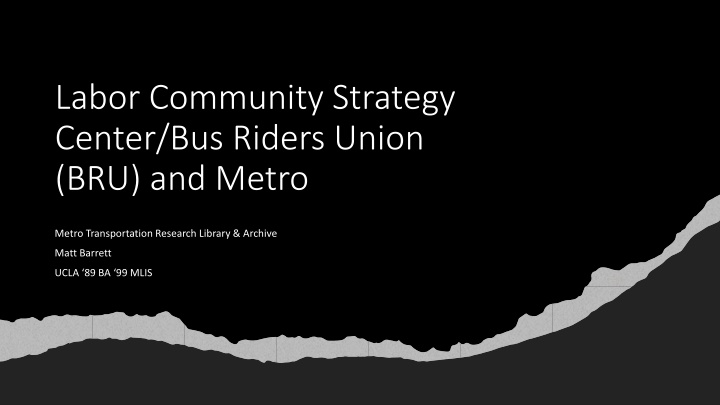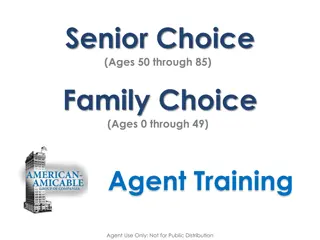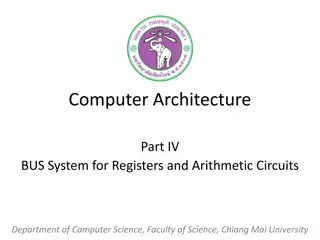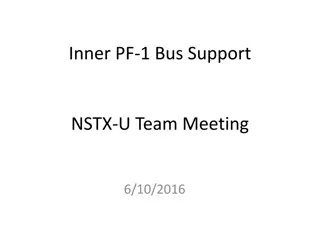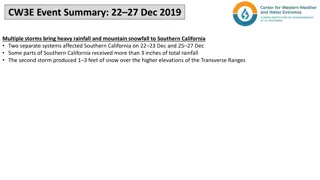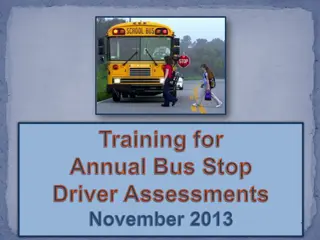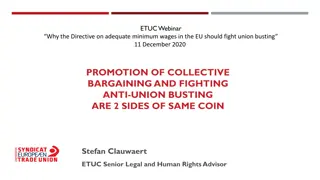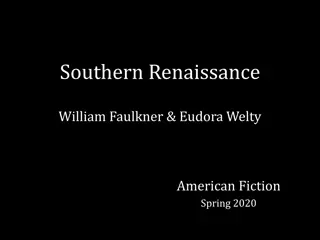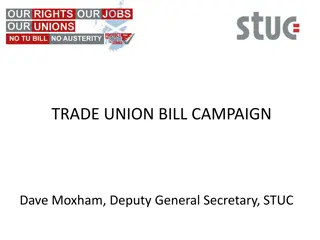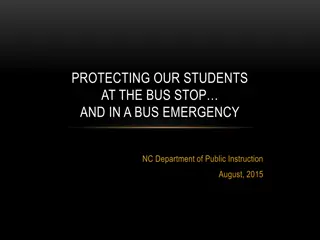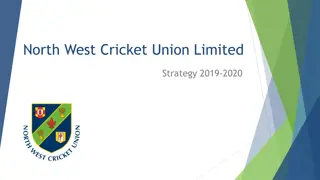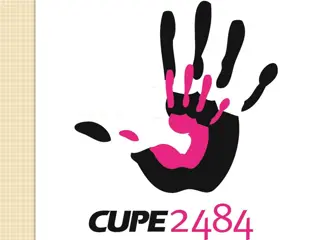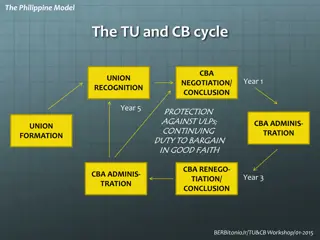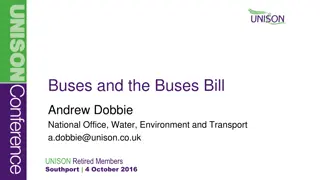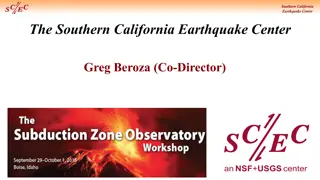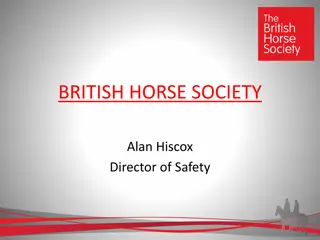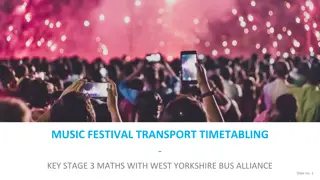Challenges Faced by Labor Community Strategy Center and Bus Riders Union in Southern California
A detailed overview of the merger between the Southern California Rapid Transit District and the Los Angeles County Transportation Commission to form Metro, highlighting the contrasting cultures, leadership struggles, financial uncertainties, and vulnerabilities faced post-merger. The narrative delves into the clash of operational styles, inconsistent financial systems, and the contentious decisions made by the new CEO, ultimately leading to significant backlash from the community and staff.
Download Presentation

Please find below an Image/Link to download the presentation.
The content on the website is provided AS IS for your information and personal use only. It may not be sold, licensed, or shared on other websites without obtaining consent from the author.If you encounter any issues during the download, it is possible that the publisher has removed the file from their server.
You are allowed to download the files provided on this website for personal or commercial use, subject to the condition that they are used lawfully. All files are the property of their respective owners.
The content on the website is provided AS IS for your information and personal use only. It may not be sold, licensed, or shared on other websites without obtaining consent from the author.
E N D
Presentation Transcript
Labor Community Strategy Center/Bus Riders Union (BRU) and Metro Metro Transportation Research Library & Archive Matt Barrett UCLA 89 BA 99 MLIS
BRU & Metro Background setting the scene The Southern California Rapid Transit District (1964-1993), the main transit service provider for Los Angeles merges with the Los Angeles County Transportation Commission (1977-1993), effective February 1, 1993. The two agencies had opposite cultures. The large (10,000+ mostly union employees), hierarchical, bureaucratic, and financially strapped transit district, with its board of political appointees of elected officials, served the transit user population in a state-defined area of about 1,471 square miles within LA County s 4,753 total. It clashed with the small (400 non-union employees), matrix managed, well-funded, countywide funding, policy, programming and rail construction-oriented transportation commission. The district served transit users, the commission served the entire county and its highways, bikeways, soundwalls, its 88 cities (including Catalina Island s city of Avalon), and the 16 municipal transit operators. The commission s board of directors was comprised of elected officials themselves. The new mega agency known as Metro began in a state of chaos in 1993. Its new CEO Franklin E. White while having a CPA and JD, had never run a transit agency. He came from the state transportation commission in Albany New York. The post merger Metro Board of Directors was basically the Commission s board of directors, and merger-related cost cutting via a voluntary layoff created agency brain-drain.
BRU & Metro Vulnerabilities The combination of a non-transit CEO, and a board oriented around policy instead of running a transit system themselves and the loss of staff expertise/in-house knowledge during a chaotic time Uncertain financials the two agencies still had two different accounting systems and Metro s multiple funding sources have strict color of money/eligible use restrictions. Monthly financials were put together with manually produced spreadsheets Desire by new CEO to be financially prudent and produce merger related savings for the State politicians that created the merger New CEO is out of touch with LA s long time transit culture (the first senior discount fares in the nation were done in LA) and the region s extreme income inequality Relentless negative press focused on everything its predecessors had done and what Metro was doing and the money train , its new taj mahal headquarters, rail construction project change orders and cost escalations, its failing methanol/ethanol alternative fuel buses, a labor strike, privatization efforts, employees from predecessors suing Metro over benefit and retirement system changes, layoffs, etc.
BRU & Metro Lighting the fuse CEO pushes for draconian transit service cuts like nothing L.A. has ever seen, include lifeline overnight/owl/24-hour service that had been continuously operated since 1906. CEO simultaneously pushes to eliminate all unlimited ride weekly, bi-monthly and monthly passes, raise fares, and force transit users to pay cash per ride, or purchase old-school style transit tokens and pay per ride Public hearings are held with record turnouts and nearly universal negative sentiments and backlash The Board is faced with large projected budget deficits and approved some of the service cuts and the fare increase. The key element that no one at the time realized was missing The Federal Transit Administration s regulations contained in its Civil Rights Circular, Title VI Circular 4702.1B, has always required a detailed impact analysis using passenger survey and census data for all service and fare changes and the disparate impacts to minority and disadvantaged communities, and it must be board approved. Failure to abide by FTE regulations can lead to loss of all federal funding something Metro was heavily dependent on for its rail and highway projects. The last one done was in 1988.
BRU & Metro As the changes are being implemented in Fall 1994, Eric Mann at the Labor Community Strategy Center and Constance Rice at the NAACP Legal Defense and education Fund step in and present a compelling case that convinces Judge Hatter that the service cuts and fare increases have a disproportionate impact to the poor and people of color, which the MTA did not analyze, violating FTA Civil Rights regulations, and that the cuts to operations were in done to preserve Metro s rail construction program. The judge issues an injunction, and the Bus Riders Union (BRU) project is born.
BRU & Metro Metro s appeals failed in court
BRU & Metro The Metro players: Linda Bohlinger CEO 1997 Roger Snoble CEO 2001-2009 Mayor Villaraigosa Board of Directors 1991-2013 Mayor Riordan Board of Directors 1994-2002 Franklin E. White CEO 1993-1995 Joseph Drew CEO 1996 Julian Burke CEO 1997-2001 Hon. Terry J. Hatter Jr. , Senior Judge of the United States District Court for the Central District of California Tom Rubin, former SCRTD CFO, Consultant Labor/Community Strategy Center/BRU Eric Mann Labor/Community Strategy Center Constance Rice see also Advancement Project NAACP Legal & Education Fund
BRU & Metro After two years of back and forth between the BRU and Metro, short term CEO Joe Drew signs the 1996 Consent Decree, agreeing to a decade of improvements to buses and the transit system, with various performance measurements that require monthly reporting. CEO Drew then resigns over criticism related to a contract award for a Red Line subway extension to East LA. The most expensive requirement was to limit standees in buses to no more than 9 in any rolling 20-minute window. Exceeding the limit required putting an additional bus into service, resulting in the need for hundreds more buses. Metro began ordering not just more buses, but bigger buses, 45 and 60 feet in length and adding advanced technology to them, including Automated Passenger Counter tech. Cost of a 60-foot articulated bus, $965,000 each. Link to full text of the Consent Decree
BRU & Metro The policy issues created by the Consent Decree along with its financial impacts of its requirements were reflected in every short term and long range transportation plan, short term and long term financial forecasts, annual budgets and impacting staffing dedicated to measuring and reporting system performance - the ripple effects were enormous, including multiple layoffs of non transit operations staff. The will of the voters expressed a desire for more rail based transit and highway improvements by passing Proposition A (1980) and Proposition C (1990). In 1992, the former Transportation Commission spent $980 million to purchase rail rights of way in L.A. County to preserve them for rail projects and arterial roadway improvements. How would the will of the voters be reconciled with the Consent Decree? And to the BRU s broader point why are taxpayer funded air polluting highways free but taxpayer funded cleaner air transit requires an additional use fee/fare? Is it racist? Classist? Is it how policy making government entities are organized? The internal discussions between metro staff and BRU representatives was mainly over what funding was fungible to support the Consent Decree s demands and what funding wasn t. For example 35% of Prop A s tax revenues are required to go to rail construction (capital funding). It isn t legally possible to use it for bus service (operating funding). The BRU wasn t interested in the details or colors of money. They wanted all rail stopped and buses to be the primary, if not, only transit service. The BRU had an immoveable, specific point of view and they stuck to it. The LA Times frequently agreed with them, resulting in letters to the editor from frustrated Metro executives.
BRU & Metro Immediate effects The Federal Transit Administration issued a scathing letter holding up federal funding and demanding to know how Metro would continue to fund it rail construction program while meeting the requirements of the Consent Decree. The FTA wanted a credible financial plan. Federal confidence was already shaken by revelations in a 60 Minutes hit piece, Early Problems on the LA Subway Part 1 and Part 2 Metro s 4th CEO was finally able to reassure the FTA in 1997, after demobilizing all subway construction, with an acceptable new financial stability plan. Long Term effects - By 2006, the final year of the Consent Decree, Metro is named America s Best by the American Public Transportation Association. See this list of milestones More technology than ever before is incorporated into all new bus and rail vehicle purchases.
BRU & Metro Additional Resources From Bus Riders Union to Bus Rapid Transit: Race, Class, and Transit Infrastructure in Los Angeles https://www.kcet.org/history-society/from-bus-riders-union-to-bus-rapid-transit-race-class-and-transit- infrastructure-in-los-angeles Bus Riders Union. Film. Haskell Wexler. 2000. 86 minutes. The Los Angeles Bus Riders Union's triumphant struggle to win better service. https://www.zinnedproject.org/materials/bus-riders-union/ Labor Community Strategy Center Bus Riders Union https://thestrategycenter.org/projects/bus-riders-union/ BRU facebook page - https://www.facebook.com/busridersunion/ Collection of court documents in the Metro Library Collection http://libraryarchives.metro.net/DPGTL/ConsentDecree/ Los Angeles Transit History presentation, Metro Library Collection http://libraryarchives.metro.net/DPGTL/presentations/2018-Presentation-Archive-Research-Short.pptx Metro Library Daily Transportation Headlines news aggregation http://headlines.metroprimaryresources.info/
Maps 1935 Los Angeles Railway 1925 Pacific Electric 2021 Metro BRU & Metro - End
